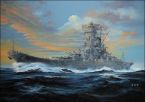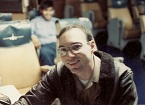castor troy
Posts: 14330
Joined: 8/23/2004
From: Austria
Status: offline

|
quote:
ORIGINAL: Big B
Interesting discussion (and I do fall into the 'US fighters used higher octane' camp.)
However, one thing I remember from 30+ years ago in my hot-rodding days, was that running higher octane fuel in a lower compression engine designed for lower octane fuel - actually hurt performance. As I recall you need higher compression to reap the benefits of higher octane fuels.
I readily admit that I have no experience with turbo/supercharged engines, however I do remember that if you go turbocharging or supercharging a stock lower compression engine - what ever gain you achieve will quickly destroy the bottom end of that engine because the crank, rods, rings, and bearings will not handle the boost....without seriously strengthening all of those components (not to mention modifying the oil pick-up, windage, and head-flow).
I may be all wet, but it seems to me that running significantly higher octane fuel without increasing compression is kinda worthless - and if you do increase compression - you MUST increase the robustness of the entire bottom end or it the engine will self-destruct quickly....so I'm not sure what good it would do to run 100+ octane avgass in a 90 octane designed engine?...it doesn't seem to make practical sense to my Neanderthal brain?
On the other hand, I may be completely wrong 
quote:
ORIGINAL: Symon
quote:
ORIGINAL: JeffK
Interesting article about the other end of the spectrum, increasing the octane rating able to be used by USAAF/RAF fighteres in 1944-45
http://www.wwiiaircraftperformance.org/150grade/150-grade-fuel.html
That’s an excellent summary article. The results certainly show significant improvement. I read it through several times, as well as the eleven others referenced within. The other articles tell the story of the months of iterative testing it took to get to those improved performance specs, and what had to be done to the engines in order to actually achieve those numbers.
Depending on the plane, MAP went from 52-56”, through the 64” range, and up to 70” in some cases. CAT saw a corresponding increase. It required changes to injection (#12 to #13 ports in most cases), changes to mixture control, changes to ducting for cooling (sometimes a new cooling system), changes to turbo speeds, with consequent changes to lo/hi blower transitions, Woof !!
A real eye-opener was the practical testing done on the early P-38s. Allison had a hard spec on the engine, 45C CAT and *maybe* 55C at 5-min WEP: exceed it and the engine turns into slag. But practical tests ran CAT to 85C without blowing it up. Pressure is Temperature, so higher T allows higher P, and HP can go up. That’s why the apocryphal stories of P-38 mechanics tuning their planes into monsters.
They were true but they were true for squadrons here and there that had knowledgeable commanders and righteous mechanics. Your run-of-the-mill P-38 pilot shows up with his copy of The Book and squadron practice makes that the basis for flight profiles. Obviously, some can perform better and do so. Sounds exactly like Sakai and Genda. But it wasn’t the “uniform” paradigm.
But alas … we had captured enough wartime documentation to know exactly how to run the various Japanese engines, according to their own specifications, so that’s exactly how we tested them. It’s what one would expect in a wartime situation, when one wishes to know the “capability” of an enemy aircraft for the edification of it’s pilots.
So, if one reads the “text” of the US test reports, one can get an appreciation of the what’s and wherefores of the results, including the engine operational conditions.
dunno about the '40s but nowaday's engines don't care. We used to drive cars using 90 Octane fuel that isn't even available on most petrol stations nowadays. So we go with 95 Octane fuel. Now Shell is promoting to use 100 Octane fuel (which is just horrible more expensive), saying it would get you more performance out of your crappy car and being better for it anyway, whatever that means. There also has been 98 Octane fuel as long as leaded fuel was allowed which then vanished and if you had a car using that you had to get 95 Octane fuel and fill in a litre of lead substitute.
< Message edited by castor troy -- 9/26/2013 3:56:56 PM >
_____________________________
|
 Printable Version
Printable Version























 New Messages
New Messages No New Messages
No New Messages Hot Topic w/ New Messages
Hot Topic w/ New Messages Hot Topic w/o New Messages
Hot Topic w/o New Messages Locked w/ New Messages
Locked w/ New Messages Locked w/o New Messages
Locked w/o New Messages Post New Thread
Post New Thread